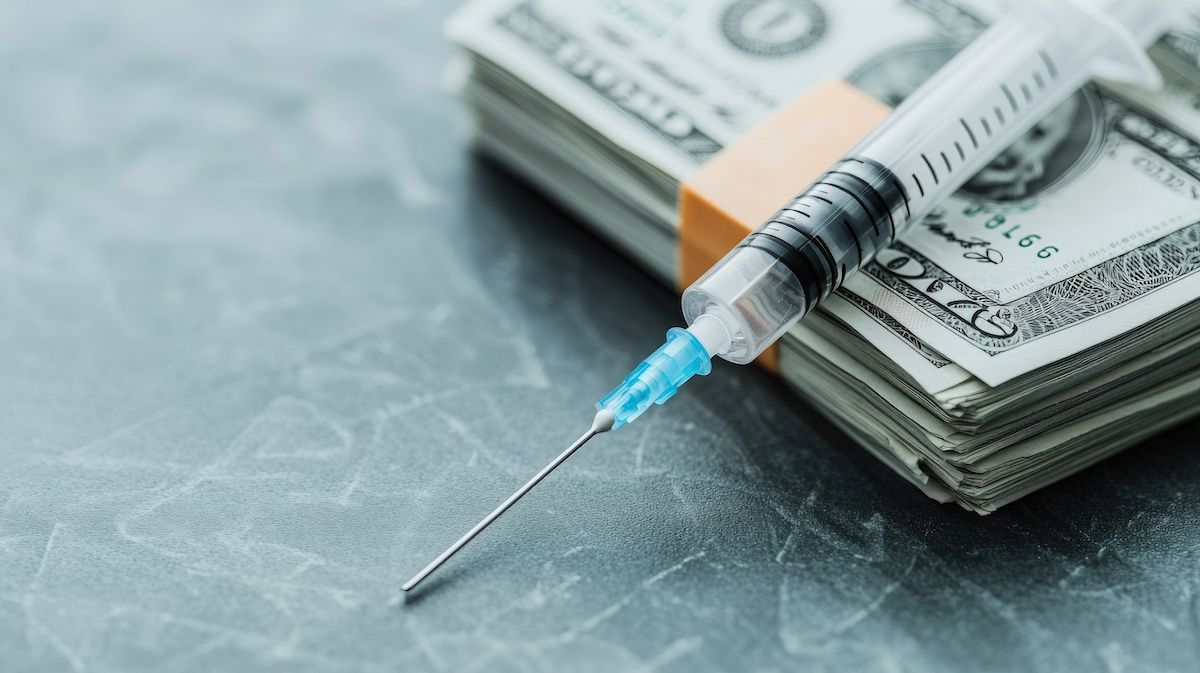- Bone Health
- Immunology
- Hematology
- Respiratory
- Dermatology
- Diabetes
- Gastroenterology
- Neurology
- Oncology
- Ophthalmology
- Rare Disease
- Rheumatology
Risk-Adjusted NPV Framework for Biosimilars Shows Key Investment Drivers
Early market entry, manufacturing efficiency, and market share are critical to biosimilar development success, while technical complexity and competition heavily impact returns, according to a study presenting a risk-adjusted net present value (NPV) analysis framework.
Early market entry, efficient manufacturing, and strong market share are make-or-break factors for biosimilar success, according to a recent study evaluating development opportunities.1
Unlike generic drugs, biosimilars require substantial investments and face unique challenges such as complex manufacturing, strict regulatory demands, uncertain market acceptance, and intense competition. | Image credit: เด็กชาย นุ่มนิ่ม - stock.adobe.com

The study, published in Biologics: Targets and Therapy, was conducted in response to the growing need for cost-effective health care solutions, particularly through the adoption of biosimilars. As patents expire on major biologics, biosimilars present an opportunity to reduce health care expenditures. However, their development is complex, costly, and influenced by evolving regulatory and market dynamics. Unlike generic drugs, biosimilars require substantial investments and face unique challenges such as complex manufacturing, strict regulatory demands, uncertain market acceptance, and intense competition.
The researchers created a financial evaluation model specifically tailored to biosimilar development, recognizing that traditional methods like standard net present value (NPV) fall short in accounting for the unique risks, costs, and market dynamics of biosimilars. With global biosimilar savings projected at $38.4 billion between 2021 and 2025, and increasing pressure to reduce health care costs, managed care stakeholders need better tools to assess investment value.
The researchers developed a risk-adjusted NPV framework that factors in biosimilar-specific elements such as regulatory complexity, longer development timelines, price discounts, and competitive intensity. Key inputs included development costs of $100 million to $250 million, a 6-to-8-year timeline, 30% to 40% price discounts, and 15% to 30% peak market share.2 The model also included sensitivity analyses to reflect real-world variability.1
To evaluate their NPV framework, the authors applied it to 3 modeled biosimilar development programs, each focused on a different monoclonal antibody in unique therapeutic and market contexts.
The first case study involved a biosimilar for a high-value oncology indication, with a development cost of $140 million over 7 years and a 70% success probability. This program achieved a risk-adjusted NPV of $85 million and an internal rate of return (IRR) of 16.5%.
The second case targeted an immunology indication, requiring an 8-year timeline and $165 million investment. With a 65% probability of success, the program yielded a higher NPV of $120 million, largely influenced by market penetration potential and manufacturing efficiency.
Lastly, the third scenario modeled a more complex biosimilar requiring novel formulation and extended development time. Despite higher costs at $190 million, the analysis produced a favorable NPV of $95 million, supported by limited competition and strong pricing power.
The cross-case analysis revealed consistent value drivers across all 3 biosimilar programs. Early market entry and accelerated development timelines significantly improved financial outcomes, highlighting the importance of speed to market. Manufacturing optimization also played a key role, as lower production costs directly enhanced project value—an important consideration for managed care stakeholders focused on affordability.
Market share assumptions had the greatest impact on NPV, emphasizing the need for strong market access strategies. Programs with higher technical complexity introduced greater risk but also offered higher potential returns. Overall, the analysis validated the NPV framework as a flexible tool for evaluating biosimilar investments across diverse development and market scenarios.
The NPV framework proved useful for evaluating biosimilar investments and should be refined further to enhance decision-making. Future improvements could include machine learning integration for more accurate risk assessment and dynamic market modeling. Expanding the model’s use to portfolio-level analysis, strategic partnerships, and capacity planning would provide additional value. Incorporating tools for market access planning and adapting the framework to account for regional pricing, reimbursement mechanisms, and regulatory requirements would strengthen its global applicability.
The analysis was based on simplified assumptions that may not capture real-world variability. Key factors like market share, pricing, and competition were modeled statically and require regular updates. The framework also lacked full consideration of regional regulatory and health care system differences, limiting its global generalizability.
References
1. Ranbhor R, Kulkarni P. Evaluating biosimilar development projects: an analytical framework utilizing net present value. Biologics. 2025:19:125-135. doi:10.2147/BTT.S514767
2. Ratih R, Asmari M, Abdel-Megied AM, Elbarbry F, El Deeb S. Biosimilars: review of regulatory, manufacturing, analytical aspects and beyond. Microchem J. 2021;165:106143. doi:10.1016/j.microc.2021.106143
Eye on Pharma: Sandoz Files Antitrust Suit; Yuflyma Interchangeability; Costco’s Ustekinumab Pick
April 22nd 2025Sandoz's antitrust suit against Amgen, the FDA’s interchangeability designation for Celltrion’s adalimumab biosimilar, and the inclusion of an ustekinumab biosimilar in Costco’s prescription program highlight growing momentum to expand biosimilar access and affordability for patients with chronic inflammatory diseases.
How AI Can Help Address Cost-Related Nonadherence to Biologic, Biosimilar Treatment
March 9th 2025Despite saving billions, biosimilars still account for only a small share of the biologics market—what's standing in the way of broader adoption and how can artificial intelligence (AI) help change that?
Latest Biosimilar Deals Signal Growth Across Immunology, Oncology Markets
April 14th 2025During Q1 2025, pharmaceutical companies accelerated biosimilar expansion through strategic acquisitions and partnerships in hopes of boosting patient access to lower-cost treatments in immunology and oncology.
Will the FTC Be More PBM-Friendly Under a Second Trump Administration?
February 23rd 2025On this episode of Not So Different, we explore the Federal Trade Commission’s (FTC) second interim report on pharmacy benefit managers (PBMs) with Joe Wisniewski from Turquoise Health, discussing key issues like preferential reimbursement, drug pricing transparency, biosimilars, shifting regulations, and how a second Trump administration could reshape PBM practices.
